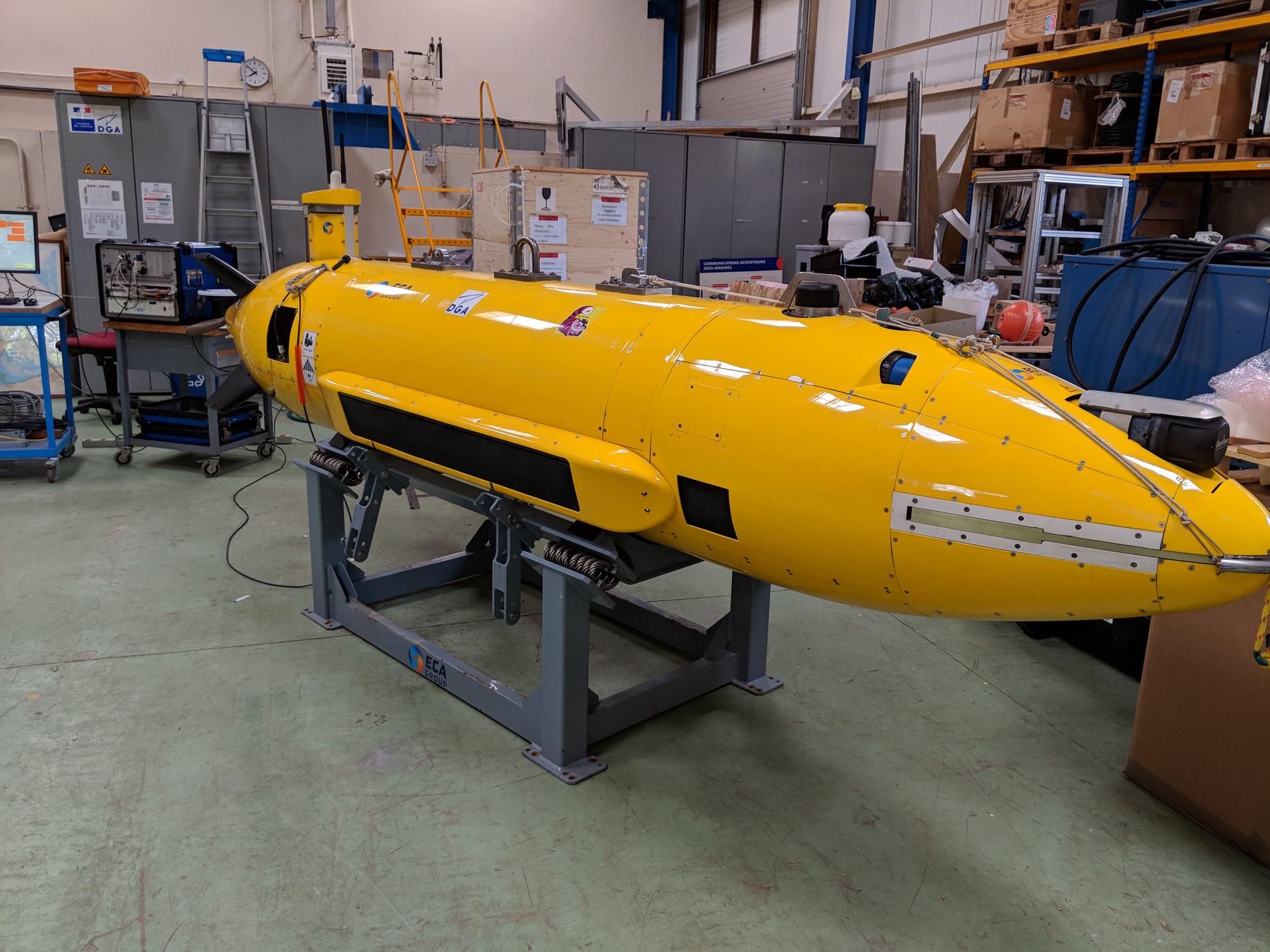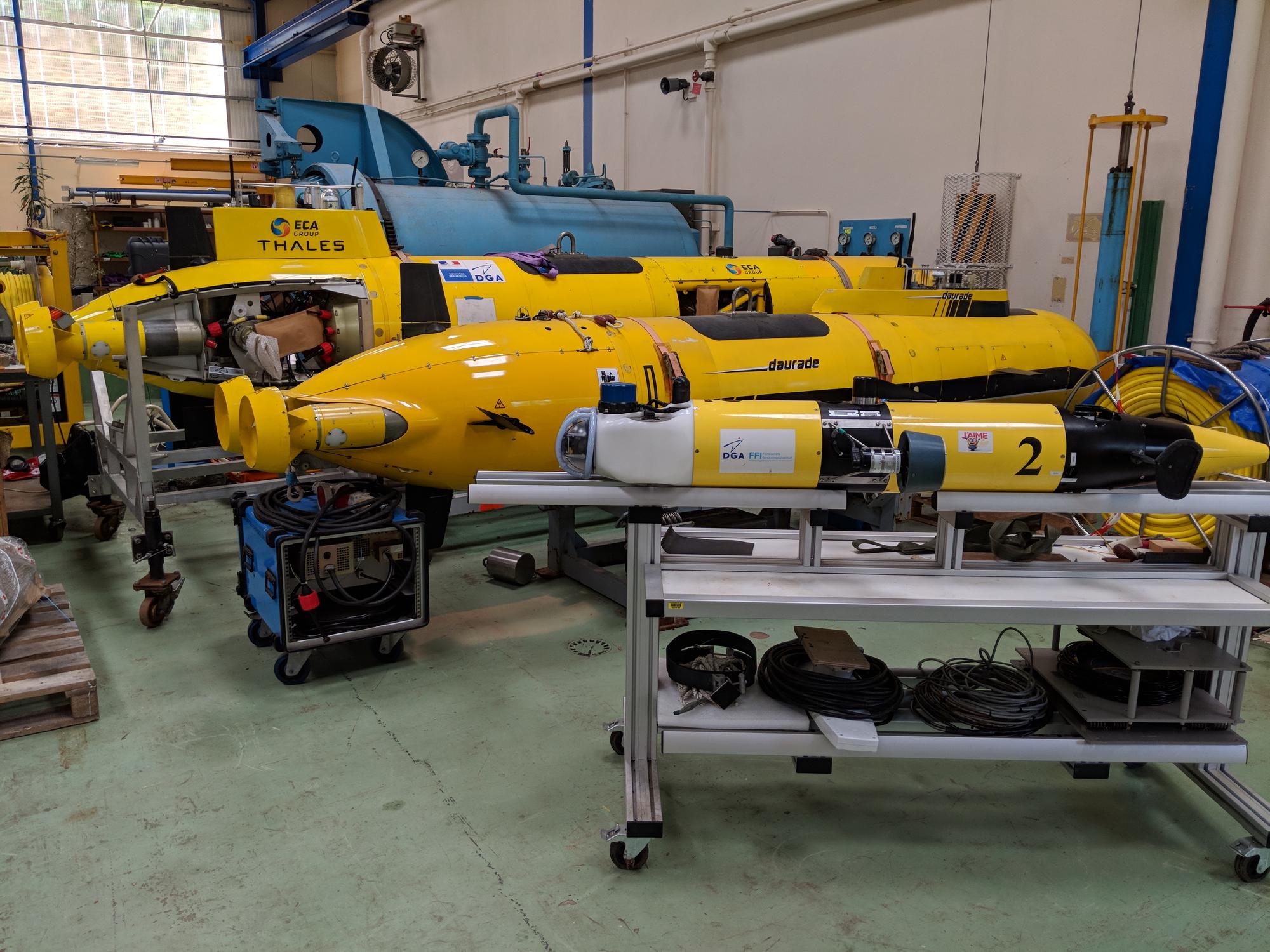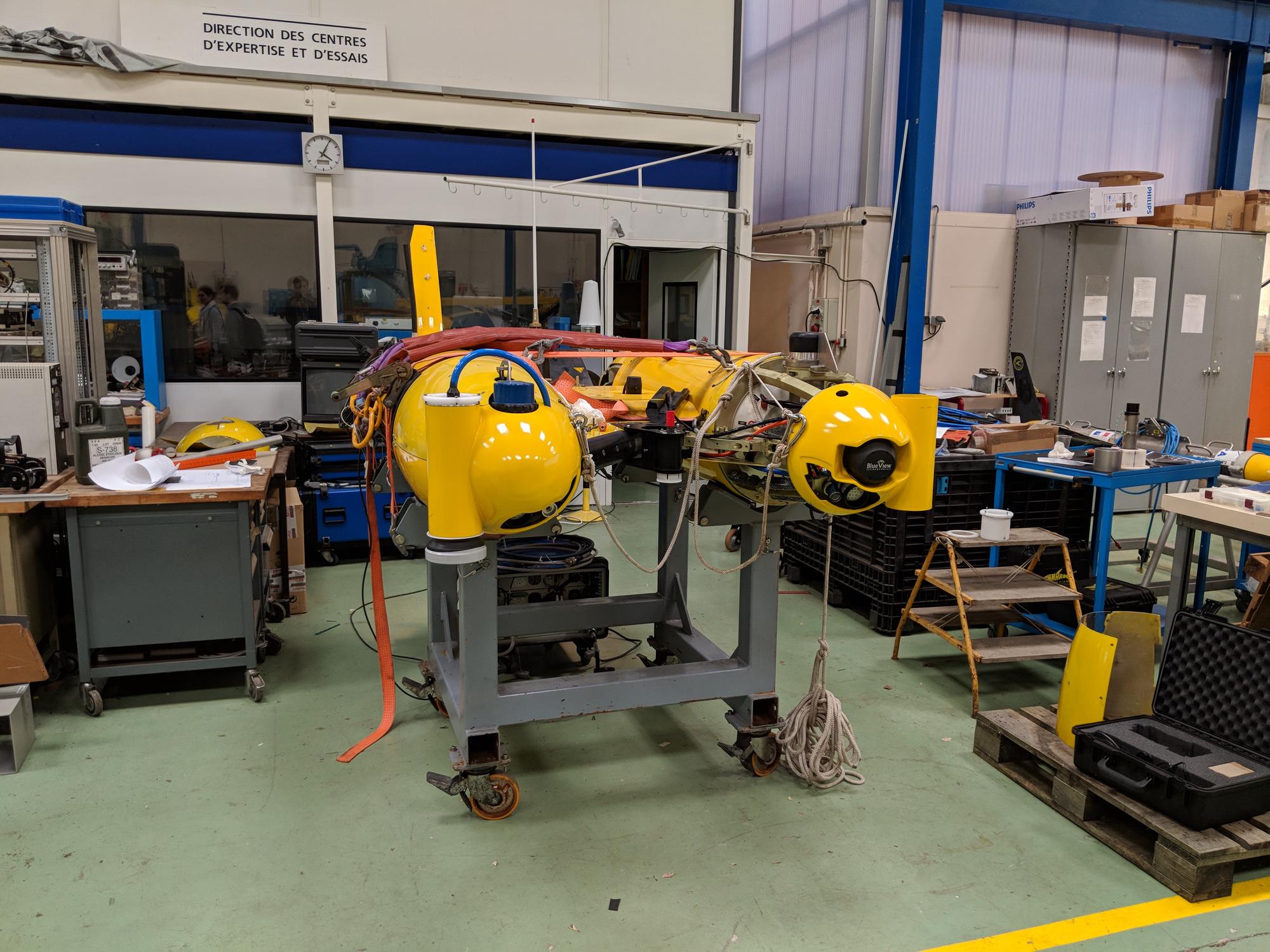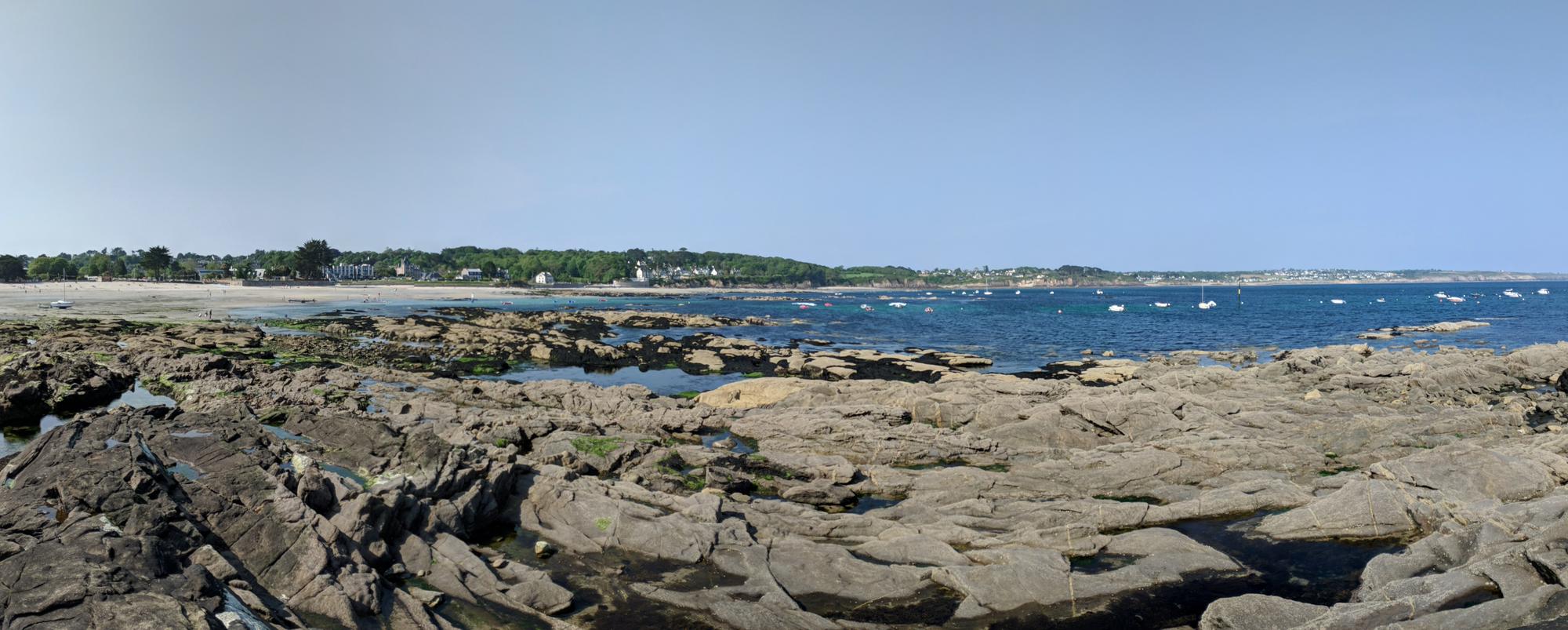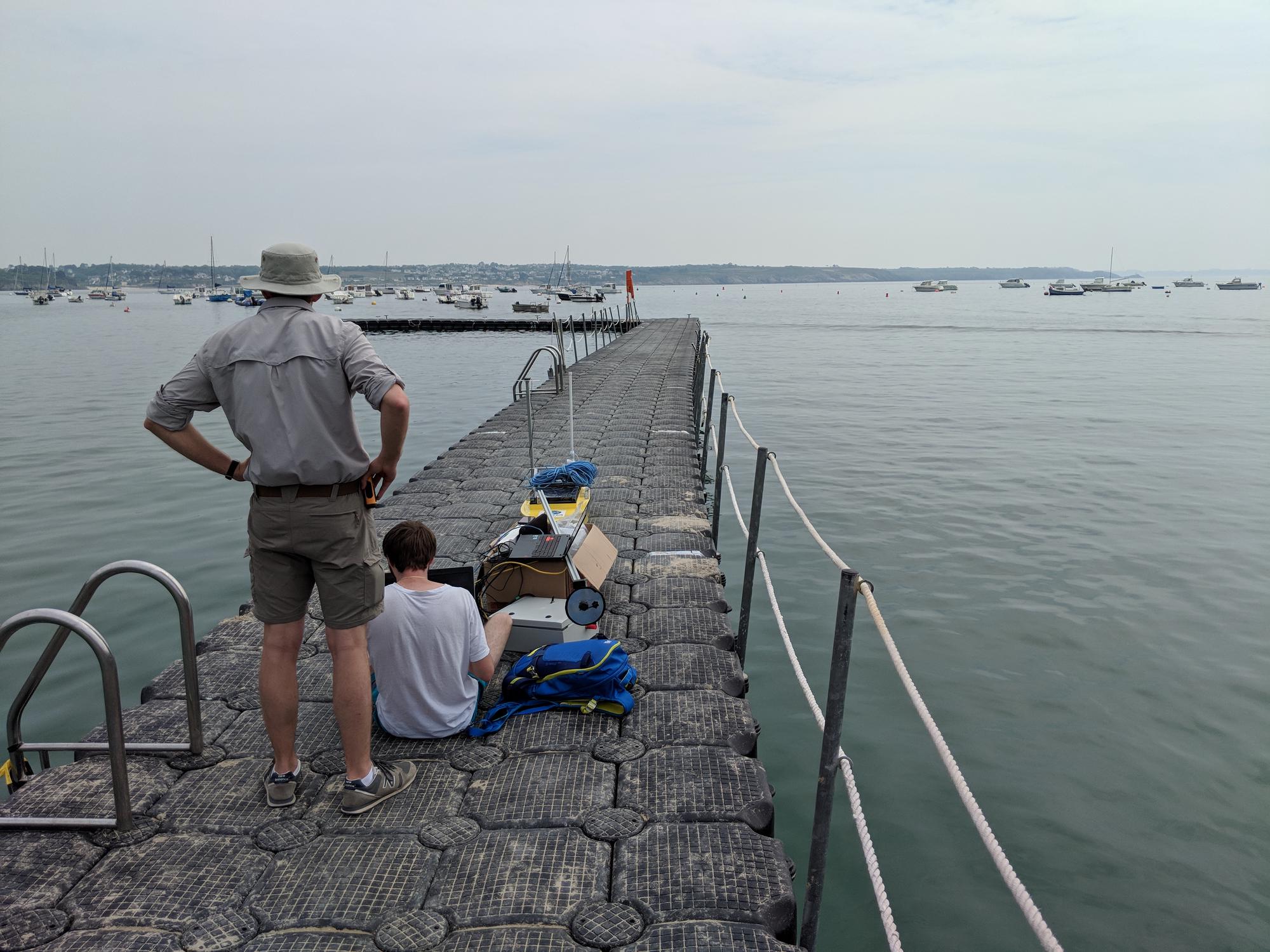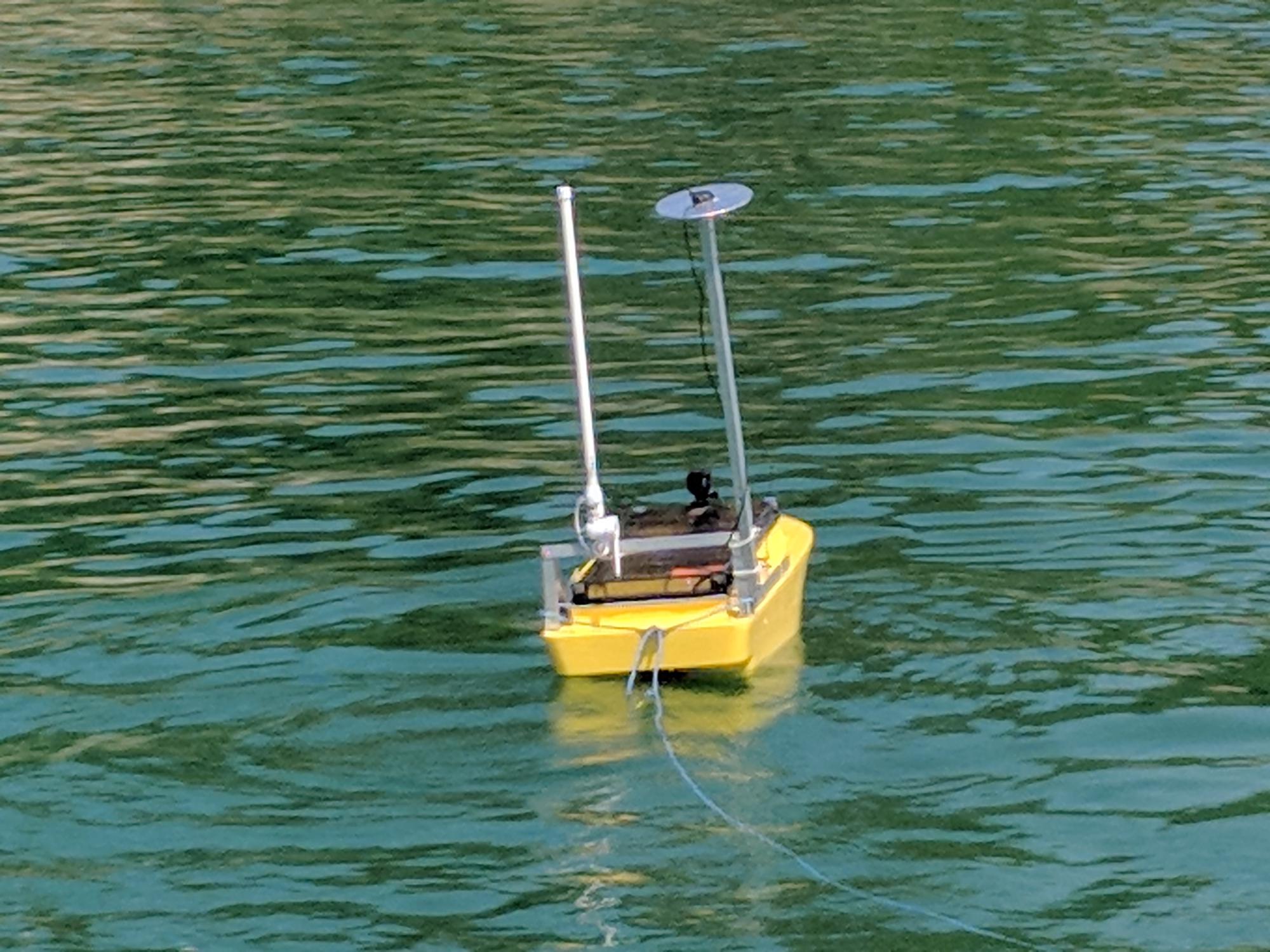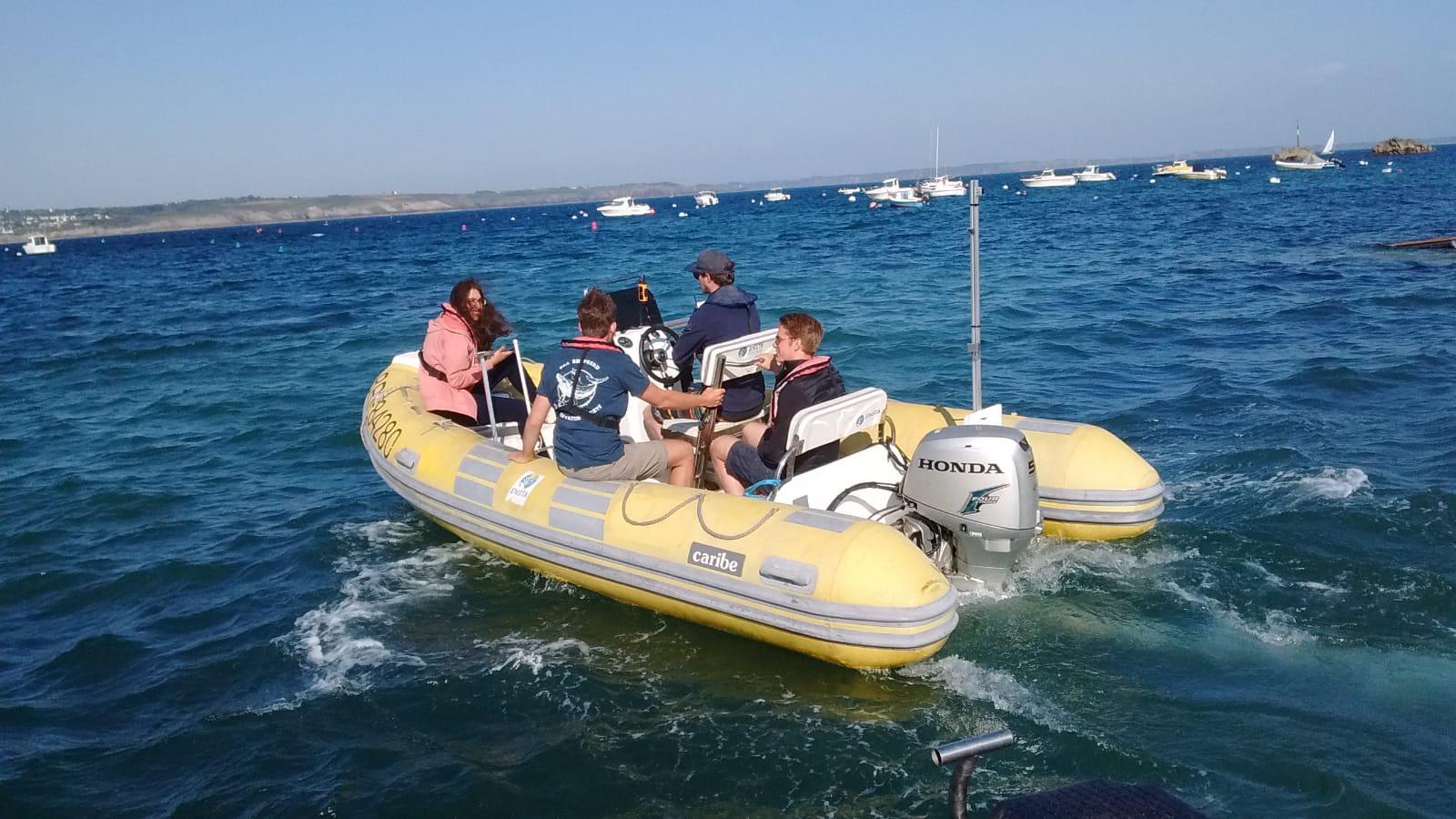First research stay at ENSTA Bretagne, Brest, France
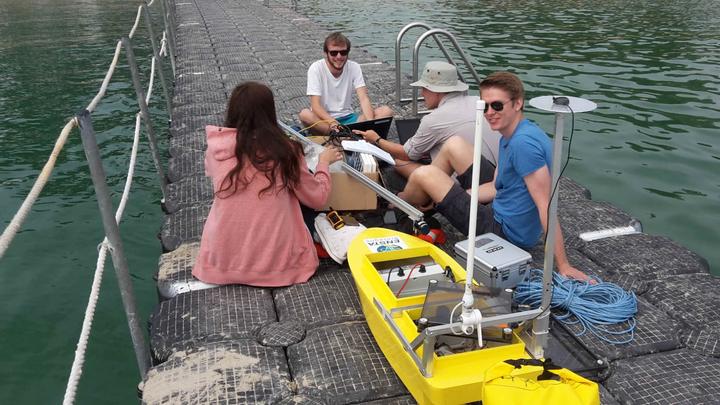 Marine robotics trials in Trez Hir
Marine robotics trials in Trez Hir
During his visit to our Research Training Group in Hannover, Prof. Luc Jaulin, who is a well-known scientist in the field of robotics and especially interval analysis, invited me to visit his lab at the ENSTA Bretagne in Brest, France. Excited about this opportunity, I arrived in Brest on May 14, 2018.
First, Luc introduced me to all colleagues in his department, including many other doctoral students and other external/visiting doctoral students. Next, Luc offered me to sit at a desk right next to him in his office. Happily, I accepted this offer as I was planning to learn as much as possible from him about interval analysis.
Interval analysis is a special kind of arithmetic that extends the classical mathematical operations to computations with sets. The underlying motivation is that nothing - first and foremost sensor measurements - can be stated with absolute certainty. Instead, we can usually give lower and upper bounds enclosing the true value. For example, when another person asks us about the distance to the next gas station, we might answer intuitively that it is 200 – 300 meters far away. In this case, we are certain that the true distance to the gas station is somewhere in between 200 and 300 meters but we do not know this true distance. This is the idea of interval analysis. Sensor measurements are assumed to belong to some interval. Subsequent algorithms (e.g. to localize an autonomous vehicle) must therefore perform computations with these intervals instead of computations with real numbers or some statistical distribution. Consequently, the result of this algorithms is also an interval or a box (i.e. a multi-dimensional interval). For example, the result of a localization algorithm could be a box on the street that encloses the true position of the vehicle.
As I had just started with my PhD topic, I still had many questions about interval analysis and robotics in general, all of which Luc happily and patiently answered. This helped me advance my research much faster than if I had to acquire all this knowledge myself.
I also started talking to the other PhD students about their research topics to try to find common ideas or opportunities for joint research. One of the students, Auguste Bourgois, had the task to dock one smaller autonomous boat to a larger boat (i.e. bring the small boat close to the large boat and follow it). This required the small boat to compute its position relative to the large boat. Here, Auguste employed GNSS to solve this localization task. To make the system more robust against GNSS failures and to improve the localization accuracy, I suggested to attach Aruco markers to the large boat and use the small boat’s camera to detect these markers and localize itself relative to these markers. This sparked our collaboration for the duration of my stay. We printed and reinforced Aruco markers to make them robust against the rough seas, which were later used for our experiments during the joint sea trials.
Since I had a room directly on the university campus, I had not seen much of Brest yet. This changed, however, as I got to know the other PhD students better. All of them were very nice to me and offered almost every day to have dinner together in the city center, to show me around the city or to spend time together doing leisure activities. For example, since it was summer, we went wakeboarding on a lake near Brest.
During my time in Brest, another PhD student defended his thesis. Since he was employed by the military, his defense included a visit to their labs. Here, we were able to see large military Autonomous Underwater Vehicles (AUVs) that are depicted in the following pictures. In addition, an interesting lecture was given on the laboratory’s research.
Another highlight of my stay in Brest was the Sub-Meeting 2018, which was a two day event to jointly conduct experiments in marine robotics. It took place directly on the beach of Trez Hir, which is a tourist location close to Brest.
A 1 km² area on the sea opposite Trez Hir was reserved for these experiments. I spent most of the time learning and observing what others were trying to do during these experiments. In addition, we conducted our own experiment for which we had prepared the Aruco markers earlier. The images below give an impression of our experiments.
In total, I spend four weeks in Brest. During this time I was able to learn a lot about interval analysis, marine robotics and robotics in general. This turned out to be very valuable for my own research project on the way to my doctorate.
